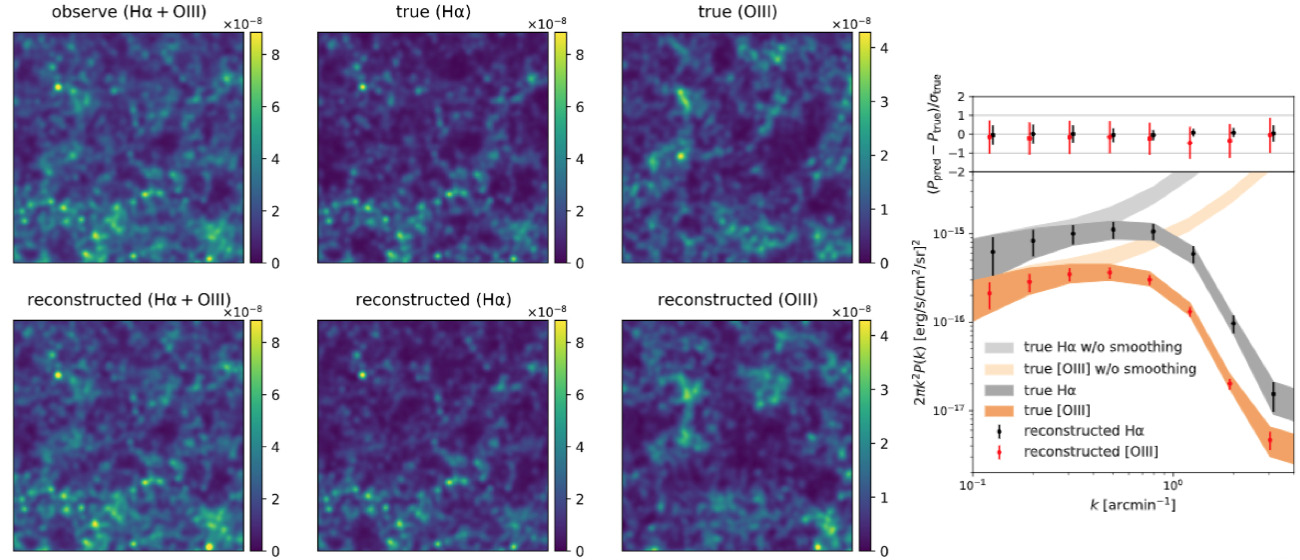Tsukuba Uchu Forum
114th Uchu Forum
Extracting information from emission line intensity maps using deep learning
Moriwaki Kana
University of Tokyo
Abstract
Observations of large-scale structure in the universe can place constraints on the theories of cosmology, galaxy formation, and reionization. A relatively new observation method called emission-line intensity mapping can reveal the three-dimensional distribution of galaxies and intergalactic gas over a wide area by analyzing the spatial fluctuations in emission line and absorption line intensities. For example, NASA's SPHEREx telescope, which is scheduled to be launched in 2023, observes the distribution of emission line galaxies at z = 0-6 over 200 square degrees. However, in such observations, there is the problem of emission line confusion in certain wavelength ranges, and separation of the overlapping emission lines is complicated. Statistical separation methods such as the use of cross-correlation have been considered, but a map-based method for separating emission lines has not yet been devised.
We propose to use machine learning to separate emission lines. In particular, among the convolutional neural networks suitable for image analysis, the generative adversarial network (GAN) proposed in 2016 is used. GAN can deal with more complicated images than conventional neural networks because learning proceeds with the image generation and the discriminator networks competing against each other. In this study, we generated a simulated observational map for SPHEREx using a halo catalog generation algorithm based on the quadratic Lagrangian perturbation theory. Our neural network can properly reconstruct the peak position and power spectrum of a given emission line map.



 和 英
和 英